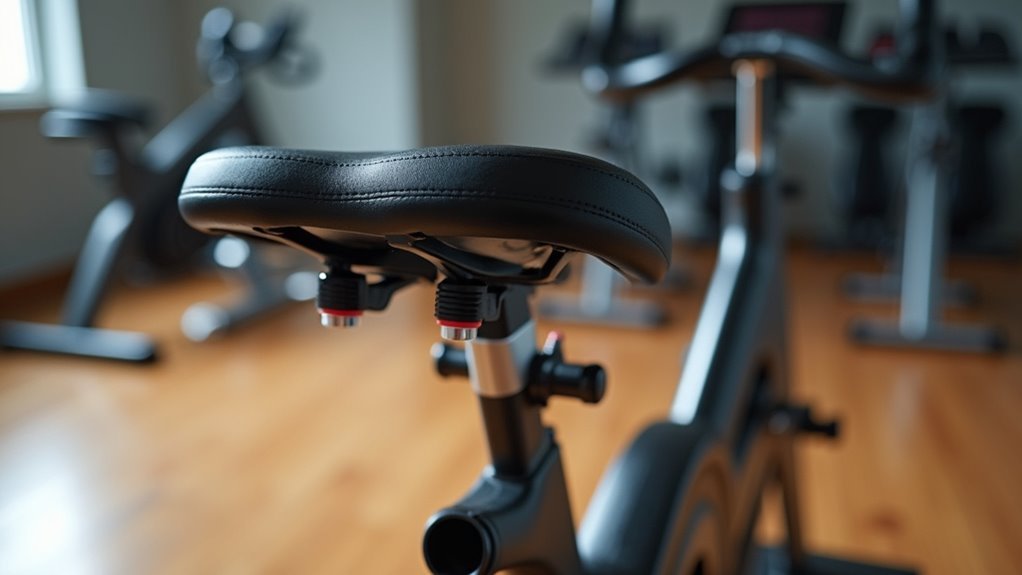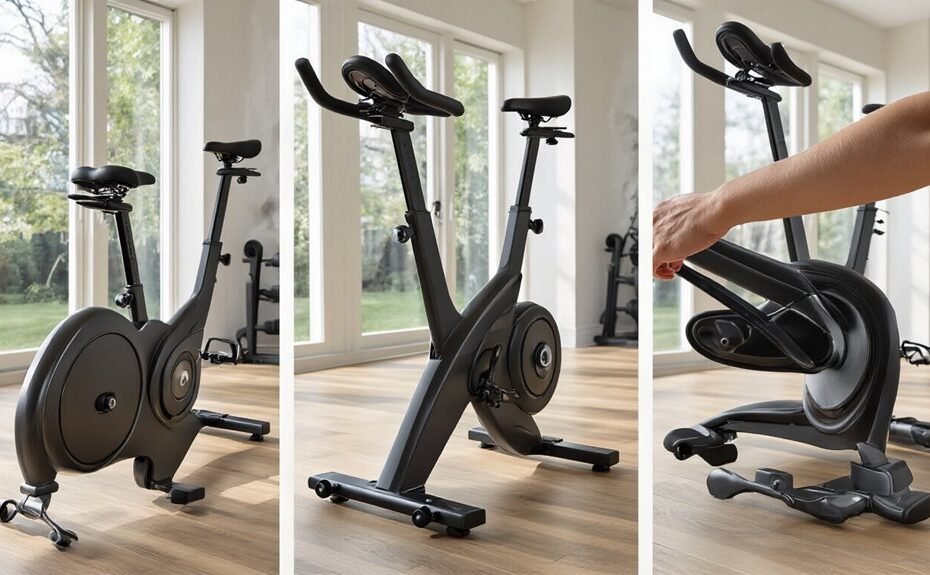Spin bike discomfort can turn an energizing workout into a painful ordeal. Many cyclists struggle through sessions on poorly adjusted bikes, not realizing that three simple seat adjustments could transform their experience. The height, horizontal position, and angle of a spin bike saddle work together to create either a biomechanically sound position or a recipe for pain. With proper adjustments, riders can eliminate numbness, reduce lower back strain, and maximize power output—all while keeping their focus on the workout itself rather than counting down the minutes until it’s over.
Some of the links in this article may be affiliate links. If you make a purchase through these links, we may earn a small commission at no extra cost to you. Thank you.
Optimal Seat Height for Proper Knee Alignment
Finding the ideal seat height on your spin bike is perhaps the most essential adjustment you’ll make for a comfortable and effective workout.
A properly adjusted bike saddle guarantees proper form and reduces strain on your lower back during exercise.
To make your exercise bike comfortable, set the saddle height level with your hip bone when standing next to it.
When pedaling, aim for a slight bend (5-10 degrees) in your knee at the lowest position. Your feet should remain flat on the pedals with good knee alignment throughout the stroke.
Too high or too low, and you’ll risk discomfort or even injury. Additionally, adjusting your seat height can enhance your overall fitness by allowing you to engage in HIIT workouts on stationary bikes that maximize fat burning.
Horizontal Seat Position for Maximum Pedaling Efficiency
Once you’ve established the correct seat height, the horizontal seat position becomes your next priority for maximum comfort and efficiency. When spinning, your seat position should allow your knee to align with the middle of the pedal when at the 3 o’clock position. Adjust the seat forward or backward until your knee is slightly bent at the 6 o’clock position to avoid strain. It’s also crucial to consider that precise intensity control enhances your workout quality and effectiveness.
| Position Issue | Effect | Solution |
|---|---|---|
| Too Forward | Knee pain | Move seat back |
| Too Back | Reduced power | Slide seat forward |
| Ideal Position | Balls of feet over pedal spindle | Regular adjustment checks |
Saddle Angle Adjustments to Eliminate Pressure Points

Perfecting the saddle angle ranks among the most overlooked yet essential adjustments for eliminating painful pressure points during your spin sessions.
For ideal comfort, position the seat angle parallel to the floor—this creates a neutral angle that distributes weight evenly. Women might prefer a slightly lowered nose, while men often need it raised a bit for extra comfort.
Use a spirit level to check your saddle angle before spin class. Remember to align the ball of your foot on the pedal with your knee directly above for proper biomechanics. Additionally, ensure that your saddle is adjustable for comfort, as this can significantly enhance your overall riding experience.
Don’t hesitate to adjust the saddle during rides if you notice discomfort developing.
Frequently Asked Questions
How to Stop Spin Bike Seat Hurting?
Riders can alleviate spin bike discomfort by adjusting proper seat height, seat angle adjustments, wearing cycling shorts, using padded seat covers or gel seat cushions, improving riding posture, and taking frequent breaks.
How to Make a Stationary Bicycle Seat More Comfortable?
Riders can transform torture devices into cloud-like thrones by adding seat padding, wearing cushioned cycling shorts, adjusting handlebar height, perfecting body posture, ensuring proper bike alignment, and selecting appropriate seat width for their anatomy.
What Is the Best Seat Position for a Spin Bike?
The ideal spin bike position integrates proper seat height aligning with hip mobility, seat depth for knee-pedal stroke alignment, saddle type suited to anatomy, handlebar height ensuring correct riding posture, and overall bike fit supporting body alignment and comfort level.
How to Be Comfortable on a Spin Bike?
Ideal spin bike posture requires proper seat height, aligned body alignment, correct foot placement, and handlebar position. Gradual resistance levels, adequate warm up routines, and effective recovery strategies enhance comfort during workout duration.
